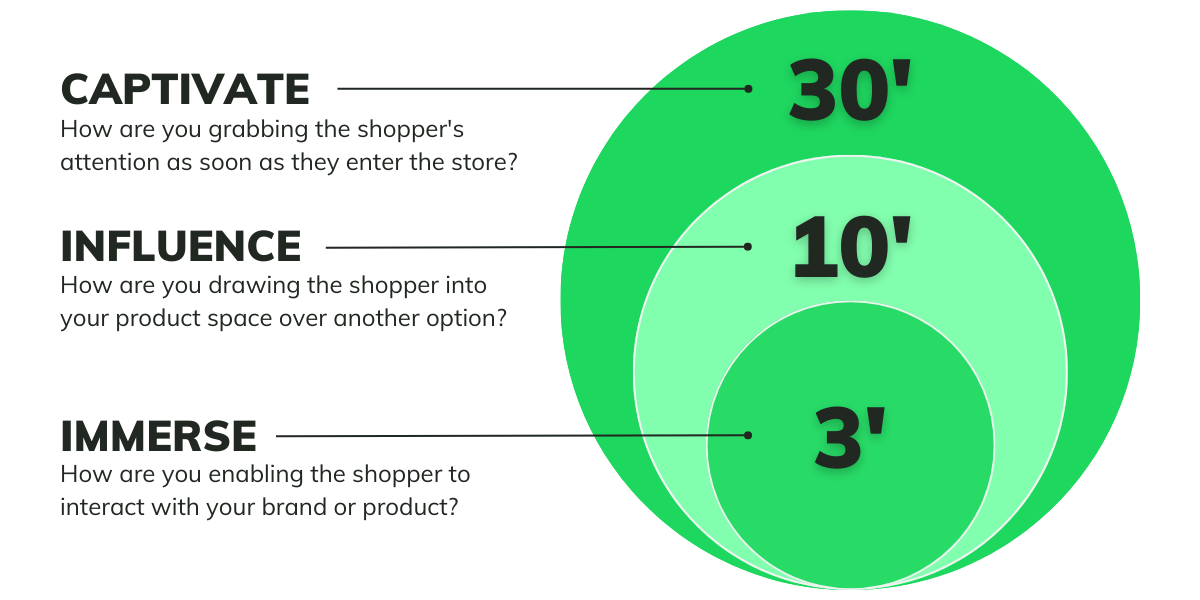The modern path to purchase is no longer linear – it’s complex and often fragmented across the digital and physical realms of retail. As a result, creating a seamless and frictionless shopping journey requires brands to now do more to bridge these worlds.
Experiential retail is one way retailers are making strides. Innovative brands are adapting to create an in-store environment that both reflects and is connected to the online shopping experience. This is crucial not only for attracting the evolving hybrid shopper but also for enabling brands to meet the shopper in their path to purchase, whether that’s consideration or conversion.
An investment in technology is a foundational step to create an integrated, digital-first ecosystem. This allows for a true omnichannel approach that creates personalized touchpoints for shoppers both in and out of the physical store to drive traffic, transactions and loyalty.
Retail brands can create a hybrid in-store experience using technology in several ways.
Mobile Integration
Retailers are investing in mobile apps to empower customers with a more informed shopping experience – including in-store navigation, product details and reviews, purchasing options and more.
Some retailers are taking mobile app integration even further by reformatting their physical in-store footprint to match mobile app experience. This can be accomplished through navigational elements, consistent branding and constant access to inventory and purchase.
For example, Walmart has emerged as an innovator in reimagining the store design in support of an omni-shopping experience. Through end-to-end digital navigation, shoppers are guided through their shopping journey. Three major changes made this possible:
- Incorporating in-store signage that reflects the Walmart app icon as a way to encourage and remind shoppers to download the app.
- Leveraging letter and number combinations to mark aisles and guide customers from mobile to the physical product.
- Creating clear navigation inspired by airport wayfinding systems to enable more efficient browsing inside the store environment.
Mobile apps also provide retailers with valuable insight into browsing and purchase history, allowing them to send personalized offers and communications—something shoppers view as table stakes in the modern shopping environment. And, with tools like geofencing, retailers can reach customers with targeted ads or promotions to drive transactions right when they enter the store’s radius.
With the goal to reduce friction and more immediately direct shoppers to what they’re looking for, mobile plays an important role in optimizing the hybrid shopper experience.
Interactive Technology
Interactive technology is another way retailers can create an immersive experience and enable customers to access additional, relevant information with ease. This includes anything from touch screen displays and tablets to video walls and digital, mobile-friendly signage, as well as scannable codes like QR codes and NFC (Near Field Communication) tags. With tools like RFID Lift & Learn kiosks, retailers can truly merge the physical and digital, enabling customers to view relevant details on-screen when a product is physically picked up from a shelf. The end goal is to help customers interact with the product and make informed purchasing decisions.
Interactive technology also plays an important role in creating ambiance and awareness to help gravitate shoppers into a retail space. This involves building a strategy around how the brand or product interacts with customers, as well as the experience it’s intended to deliver.
MERGE’s Consumer team leverages a ‘30-10-3’ approach to create effective retail experiences that meet the modern shopper expectations. This immersive engagement strategy leverages the combination of design and technology to attract customers to interact with products or brands in a meaningful way.

Order Fulfillment
Many retailers are adding new technology features to streamline the checkout process and offer convenient order fulfillment options. Mobile payments, self-checkout kiosks, pick-up in-store, click and collect, and curbside pick-up are making it easier for customers to get merchandise while creating a desirable and seamless retail experience.
Technology Trends to Follow
Retail technology is continuing to soar this year with countless new advancements and innovations taking hold. With shopper engagement becoming increasingly competitive, retailers will need to establish new ways to level-up the shopper experience by tapping into game-changing technologies.
- Augmented Reality (AR): AR can be integrated into the in-store experience to engage and empower customers with visualizations in 3D. Brands like Sephora offer shoppers virtual makeover experiences, while Sam’s Club’s Omni Optical helps customers virtually try on glasses to find the perfect fit.
- AI Personalization: AI technology increasingly allows for impactful, effective personalization in products. For example, Neutrogena released customizable skin care gummies which use their Skin 360 app to personalize your vitamin mix.
- XR, Web3 and Virtual Commerce: Web3 and VR technologies will continue to merge digital and physical consumption, with interactive virtual stores expected to continue as a retail trend in 2023. Web3 merges AR, VR and AI for higher fidelity 3D graphics, providing the ability for more advanced virtual spaces
- Touch Free Sensor Tracking. Evolutions in sensor technology now allow retailers to track a shopper’s engagement path and product interest prior to actual interaction.
Delivering on a Hybrid Experience
A digitally-based approach to merchandising and in-store experience allows brands and retailers alike to accommodate the continually shifting retail landscape and shopper expectations—as well as deliver a true personalized omnichannel path to purchase.
To find out how your brand can transform the shopper experience and bridge the online and offline worlds of retail, contact us today.
